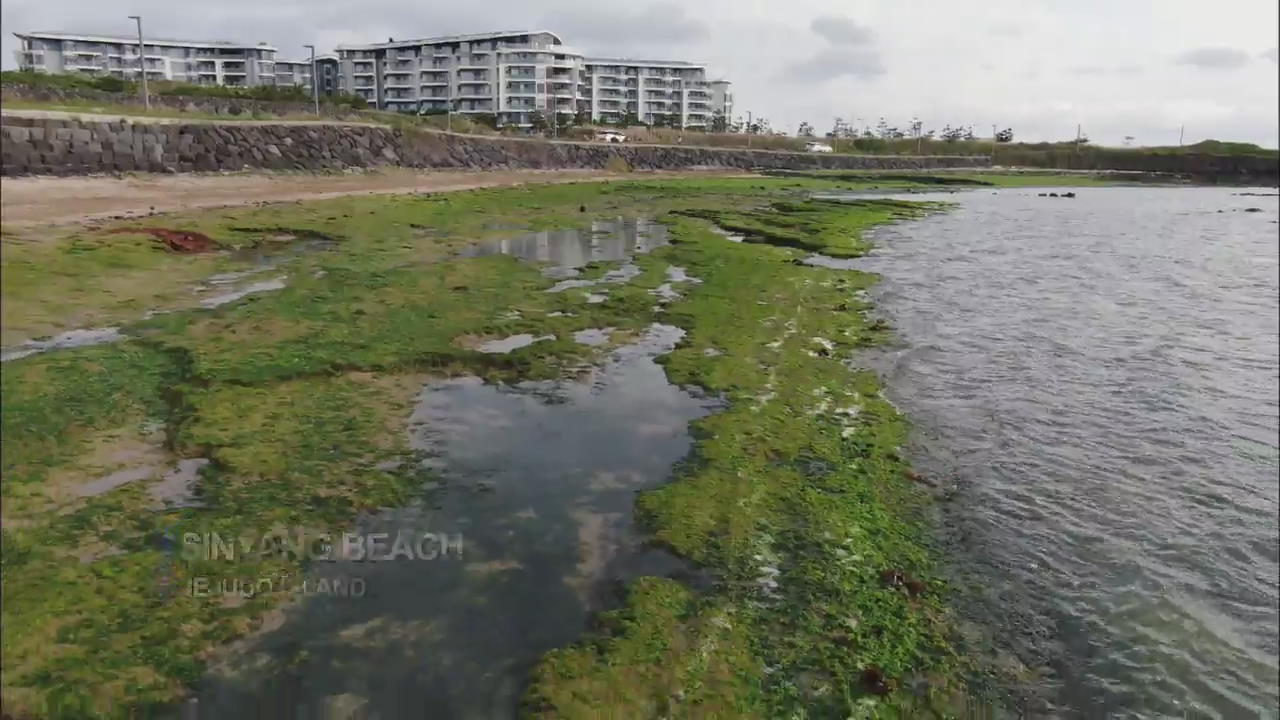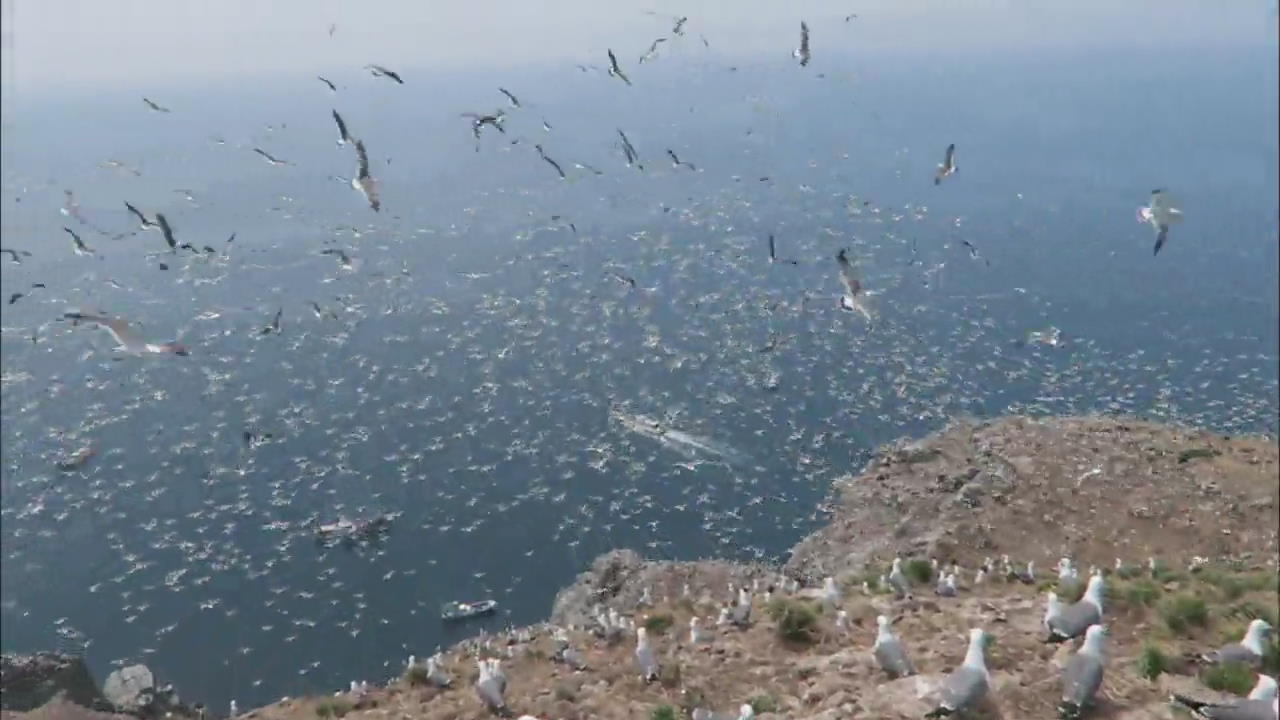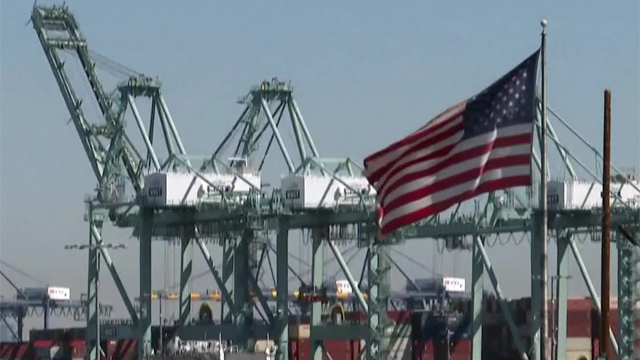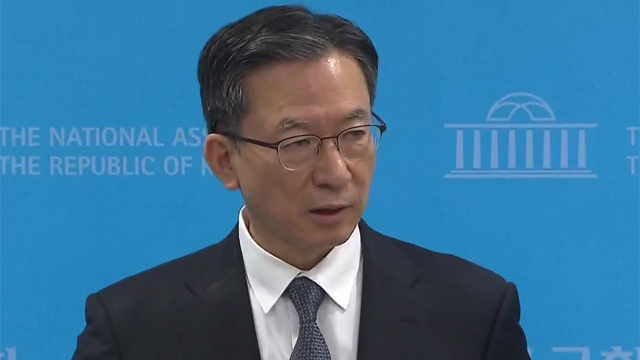ENVIRONMENTAL CONCERNS
입력 2019.05.07 (15:30)
수정 2019.05.07 (17:01)
읽어주기 기능은 크롬기반의
브라우저에서만 사용하실 수 있습니다.
[Anchor Lead]
Today for our local news, we take you to Jejudo Island where Seaweed and laver are piling up on the island coastlines, raising concerns of adversely affecting the natural environment and fishing operations. Although they are being continuously collected, what to do next still needs to be determined.
[Pkg]
Green sprouts appear to be springing up along the coastline. However, a closer look reveals a sinister scene. These are green laver. They are attached to seashore rocks coated in white, causing a dreadful smell.
[Soundbite] SONG YE-SEUL(VISITOR) : "It is neither a meadow nor a beach. It's also smelly here."
The laver is being scooped away but there's no way to stop it from propagating during the warm weather. While Jejudo Island's east coast is plagued by green laver, the northern coast has its own nuisance: gulfweed. Here as well, heavy equipment is mobilized to remove it, but the work continues for days due to the massive amount. Nearly 300 tons of gulfweed has been gathered along northern coastlines over the past ten days. In addition, large scale gulfweed clusters have been observed in the East China Sea near Ieodo Reef, which could also flow into Korea. The government of Jejudo earmarked a 1.1 billion won budget this year for the cost of removing green laver and gulfweed along its coasts. But a more fundamental approach has been called for in order to focus on prevention, including determining why the plants grow and accumulate in the first place.
Today for our local news, we take you to Jejudo Island where Seaweed and laver are piling up on the island coastlines, raising concerns of adversely affecting the natural environment and fishing operations. Although they are being continuously collected, what to do next still needs to be determined.
[Pkg]
Green sprouts appear to be springing up along the coastline. However, a closer look reveals a sinister scene. These are green laver. They are attached to seashore rocks coated in white, causing a dreadful smell.
[Soundbite] SONG YE-SEUL(VISITOR) : "It is neither a meadow nor a beach. It's also smelly here."
The laver is being scooped away but there's no way to stop it from propagating during the warm weather. While Jejudo Island's east coast is plagued by green laver, the northern coast has its own nuisance: gulfweed. Here as well, heavy equipment is mobilized to remove it, but the work continues for days due to the massive amount. Nearly 300 tons of gulfweed has been gathered along northern coastlines over the past ten days. In addition, large scale gulfweed clusters have been observed in the East China Sea near Ieodo Reef, which could also flow into Korea. The government of Jejudo earmarked a 1.1 billion won budget this year for the cost of removing green laver and gulfweed along its coasts. But a more fundamental approach has been called for in order to focus on prevention, including determining why the plants grow and accumulate in the first place.
■ 제보하기
▷ 카카오톡 : 'KBS제보' 검색, 채널 추가
▷ 전화 : 02-781-1234, 4444
▷ 이메일 : kbs1234@kbs.co.kr
▷ 유튜브, 네이버, 카카오에서도 KBS뉴스를 구독해주세요!
- ENVIRONMENTAL CONCERNS
-
- 입력 2019-05-07 15:31:11
- 수정2019-05-07 17:01:28

[Anchor Lead]
Today for our local news, we take you to Jejudo Island where Seaweed and laver are piling up on the island coastlines, raising concerns of adversely affecting the natural environment and fishing operations. Although they are being continuously collected, what to do next still needs to be determined.
[Pkg]
Green sprouts appear to be springing up along the coastline. However, a closer look reveals a sinister scene. These are green laver. They are attached to seashore rocks coated in white, causing a dreadful smell.
[Soundbite] SONG YE-SEUL(VISITOR) : "It is neither a meadow nor a beach. It's also smelly here."
The laver is being scooped away but there's no way to stop it from propagating during the warm weather. While Jejudo Island's east coast is plagued by green laver, the northern coast has its own nuisance: gulfweed. Here as well, heavy equipment is mobilized to remove it, but the work continues for days due to the massive amount. Nearly 300 tons of gulfweed has been gathered along northern coastlines over the past ten days. In addition, large scale gulfweed clusters have been observed in the East China Sea near Ieodo Reef, which could also flow into Korea. The government of Jejudo earmarked a 1.1 billion won budget this year for the cost of removing green laver and gulfweed along its coasts. But a more fundamental approach has been called for in order to focus on prevention, including determining why the plants grow and accumulate in the first place.
Today for our local news, we take you to Jejudo Island where Seaweed and laver are piling up on the island coastlines, raising concerns of adversely affecting the natural environment and fishing operations. Although they are being continuously collected, what to do next still needs to be determined.
[Pkg]
Green sprouts appear to be springing up along the coastline. However, a closer look reveals a sinister scene. These are green laver. They are attached to seashore rocks coated in white, causing a dreadful smell.
[Soundbite] SONG YE-SEUL(VISITOR) : "It is neither a meadow nor a beach. It's also smelly here."
The laver is being scooped away but there's no way to stop it from propagating during the warm weather. While Jejudo Island's east coast is plagued by green laver, the northern coast has its own nuisance: gulfweed. Here as well, heavy equipment is mobilized to remove it, but the work continues for days due to the massive amount. Nearly 300 tons of gulfweed has been gathered along northern coastlines over the past ten days. In addition, large scale gulfweed clusters have been observed in the East China Sea near Ieodo Reef, which could also flow into Korea. The government of Jejudo earmarked a 1.1 billion won budget this year for the cost of removing green laver and gulfweed along its coasts. But a more fundamental approach has been called for in order to focus on prevention, including determining why the plants grow and accumulate in the first place.
이 기사가 좋으셨다면
-
좋아요
0
-
응원해요
0
-
후속 원해요
0

















이 기사에 대한 의견을 남겨주세요.